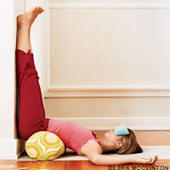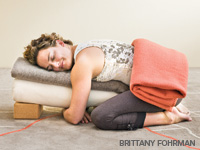 Everyone at some point or another experiences stress and burnout. I think it's important to point out that there is good stress or eustress as endocrinologist Hans Selye coined and then there is bad stress or distress, everyone has different perceptions of stress so what your wife, husband, brother, sister experience as really stressful you may find exhilarating and will provide you with a sense of fulfillment and vice versa. Due to everyone having different perceptions of what is stressful it's important to notice your own telltale signs of getting distressed and take the necessary action to enable your sympathetic nervous system, the nervous system that enables us to get things done and gets us fired up to take action a chance to take a back seat for a while and allow the parasympathetic nervous system to kick in. The parasympathetic nervous system is the part of the nervous system that allows our body's to go into healing and repair mode and it is important for EVERYONE to take time to tap into this state daily but it is essential for people who are going through health challenges and stressful life events. The human body is incredibly intelligent and it doesn't need a huge amount of time to be able to flip the switch from sympathetic to parasympathetic, you can feel the difference in just a few minutes. So the great news is it isn't expensive, you don't need any fancy equipment and it doesn't take masses of time :) All you do need is a commitment to your wellness and to be able to find some peace and quiet for a certain amount of time per day. The first thing I recommend to all my yoga and massage clients is to learn how to breath properly and efficiently, there are many different types of breathing practices or pranayama but the most simple and effective breathing technique is learning how to do diaphragmatic breathing. So make yourself comfortable..you can do this in any position but to first learn it's easier to start by laying on the floor so you can allow your abdominal muscles to relax. Allow yourself to rest in a comfortable position and place your hands on to your belly, just begin to observe the breath first of all so you can draw your awareness inside, allow the breath to slow down and lengthen and feel the subtle sensation of movement under the hands, get a sense of the dome shaped muscle at the base of the lungs beginning to move downwards with each inhale and drawing up with each exhale. You can stay with this breath for anything from 3 minutes upwards and you will feel the difference in the cells of your body. Put a timer on your phone so you can take little pauses throughout your day so you can reconnect with this breath little and often. Another way to be able to tap into your parasympathetic nervous system is restorative yoga and as a bonus you get a chance to practice diaphragmatic breathing. Restorative yoga is so wonderful in this busy world of doing because we can just allow yourself to be and allow your body/mind to sink into stillness and you may find that the more you allow yourself to do this the more your body craves it. If you find the only time that you allow yourself to relax is when you sleep you are missing out. My three favourite restorative yoga postures are-  Supta baddha konasana or reclined cobblers pose. If you don't have a yoga bolster all you have to do is get a couple of big towels and fold them in such a way that when you lean back onto them you get a nice elevation through the chest, bring the soles of feet together and allow the legs to drop open placing a couple of pillows or blankets/towels under the legs so it doesn't feel like they are hanging in mid-air. To make yourself more comfortable you may want to place a small towel under the head and cover the eyes with an eye pillow or small towel. Put some relaxing music on and stay here from 5 minutes up to 20 minutes.  Viparita karani or legs up the wall. I haven't met one person who dislikes this pose even the most active and sporty people love hanging out in this delicious pose. Grab a pillow or blanket and place under the pelvis, it can be a little tricky to get into as you have to come into it side ways but trust me it is so worth it. So sit sideways on the pillow or blanket and then shift yourself round so the butt is flush to the wall (if your hamstrings are on the tighter side you may need more of a gap), shuffle yourself into the most comfortable position you can find, press play on your favourite relaxation music, cover your eyes, tune into your breath, let go of all external distractions and enjoy!  Restorative balasana or child's pose. This is such a nurturing delicious pose, it may take a few props to get really cosy but I promise its worth it. So again grab some pillows and blankets, bring the big toes together and take the knees wide, pile the pillows and blankets as high as you need to so you can relax down into their support, you may need a towel in between the hamstring and calf muscles if you don't have full knee flexion and if you don't have much mobility in the ankle joint place something under the shin. If you're turning the head to the side make sure to turn the head both sides for an equal length of time. The beauty of restorative yoga is its simplicity it may take some time setting up and getting as comfortable as possible but once there you just allow yourself to sink deeper and deeper into relaxation, focusing on smooth deep breaths and allowing the pose just to work its magic.
1 Comment
|
AuthorAdvanced clinical massage therapist and yoga teacher. Archives
December 2023
Categories
All
|
 RSS Feed
RSS Feed